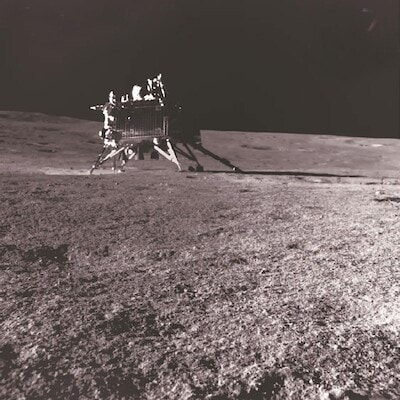The Chandrayaan-3 mission of the Indian Space Research Organization (ISRO) has brought fresh excitement among science enthusiasts. In the recent finding, the Pragvan rover discovered the ancient lunar crater. The crater is 160 km in diameter, and is believed to predate the moon’s largest and oldest known impact basin, called the South Pole-Aitken (SPA) basin.
The data collected from the Pragyan rover and Vikram lander completed their mission on September 3, 2023, and entered sleep mode.
Ancient crater older than the SPA basin
The scientists at PRL Ahmedabad have detailed the findings in a paper titled Chandrayaan-3 Landing Site Evolution by South Pole-Aitken Basin and Other Impact Craters. The scientist also revealed that the Chandrayaan-3 landed on a much older buried impact crater from the rim of the SPA basin. The ancient crater likely formed long before the SPA basin itself.
New insights into lunar history
The high-resolution Navcam and optical cameras of the Pragyan rover have captured a “semi-circular, heavily degraded structure” near the landing site. This is one of the moon’s oldest geological features, buried under debris or ejecta from the SPA basin and nearby zones. The recent findings are already helping researchers across the world to understand lunar evolutions and they could play a critical role in future missions like Chandrayaan-4, which is scheduled to take place in 2027.
The significant finding took place when the Pragyaan rover traversed the highland terrain at its landing site, approximately 350 km from the South Pole-Aitken basin, which is the largest and oldest basin on the lunar surface.
The crater is believed to have formed even before the creation of the Pole-Aitken basin, making it one of the moon’s oldest geological structures. The crater is mostly buried by debris from later impacts due to the crater’s age. This is particularly from the South Pole-Aitken event and it has started degrading over time.
Some images taken by Pragyan rover’s navigation and optical high-resolution cameras revealed the structures of this ancient crater offering vital clues about the geological history of the moon. The latest discovery is a huge opportunity for all the scientists with a rare opportunity to study deeply buried lunar material.
First Published: Sep 23, 2024 | 4:58 PM IST
Thank you for taking the time to read this article! I hope you found the information insightful and helpful. If you enjoyed this type of content, please consider subscribing to our newsletter or joining our community. We’d love to have you! Feel free to share this article with your friends and family, who might also find it interesting.

Rishabh Singh is the Editor-in-Chief and CEO of Latestnews24.com. He has also completed his graduation in BSC Aviation and has 2+ years of experience in blogging and digital marketing. Have worked with many businesses and blogs, He is also interested in Entertainments/movies/web stories and new foods recipes news, Actually this is his favorite subject. So he is always ready for discussion and written about this topic.
